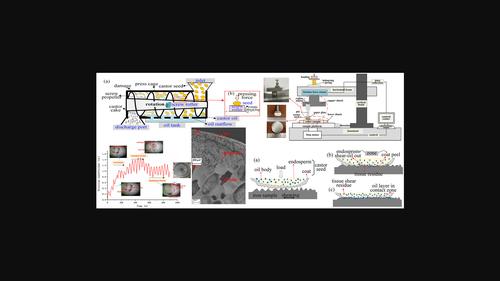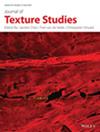蓖麻籽机械提取过程中微观结构、力学及剪切性能的研究。
IF 2.8
3区 农林科学
Q2 FOOD SCIENCE & TECHNOLOGY
引用次数: 0
摘要
蓖麻籽油作为一种重要的生物质燃料,因其广泛的应用而受到世界各国的广泛关注。蓖麻籽螺杆机械榨取实际上是将籽剪切破坏而出油。用研制的摩擦试验机对种子剪切机理进行了研究。分析了挤压载荷、剪切速度、辊筒粗糙度等因素对成形的影响。利用光学显微镜对蓖麻籽结构损伤进行了现场观察,并利用扫描电镜和能量色散光谱对其进行了深入分析。结果表明,剪切作用可分为三个阶段:被皮破坏阶段、过渡剪切阶段和胚乳出油阶段。种子剪切机制包括皮剥离、胚乳翻耕、组织转移和油脂润滑。高的压榨负荷导致被毛和胚乳受到更多的损伤,导致更多的油脂流出。随着剪切速度的增加,被皮容易剥落,接触区发生明显的胚乳剪切犁耕和油润滑。高粗糙度导致的涂层损坏导致更多的油输出。蓖麻油进入接触区起润滑剂作用,导致摩擦阻力减小。本文章由计算机程序翻译,如有差异,请以英文原文为准。

Research on microstructural-mechanical and shearing properties of castor seed during mechanical extraction
Castor seed oil, as an important biomass fuel, has attracted extensive attention worldwide due to inclusive applications. Castor seed screw mechanical extraction is in fact seed shear damage and oil output. Seed shearing mechanism has been investigated with a developed tribometer. Influences of pressing load, shearing speed, roller roughness were analyzed. Castor seed structural damage was in-situ observed with optical microscope, and in-depth analyzed with Scanning Electron Microscopy and Energy Dispersive Spectroscopy. The results reveal that shear interaction can be divided into three stages: coat damage, transition shearing and endosperm oil output. Seed shear mechanism includes coat peeling, endosperm plowing, tissue transferring and oil lubrication. High pressing load leads to more damage of coat and endosperm, causing more oil to flow out. With shearing speed increasing, coat is easily peeled, obvious endosperm shear plowing and oil lubrication happened in contact area. Coat damage by high roughness leads more oil output. Castor oil enters the contact area and work as lubricant, leading to the decrease of friction resistance.
求助全文
通过发布文献求助,成功后即可免费获取论文全文。
去求助
来源期刊

Journal of texture studies
工程技术-食品科技
CiteScore
6.30
自引率
9.40%
发文量
78
审稿时长
>24 weeks
期刊介绍:
The Journal of Texture Studies is a fully peer-reviewed international journal specialized in the physics, physiology, and psychology of food oral processing, with an emphasis on the food texture and structure, sensory perception and mouth-feel, food oral behaviour, food liking and preference. The journal was first published in 1969 and has been the primary source for disseminating advances in knowledge on all of the sciences that relate to food texture. In recent years, Journal of Texture Studies has expanded its coverage to a much broader range of texture research and continues to publish high quality original and innovative experimental-based (including numerical analysis and simulation) research concerned with all aspects of eating and food preference.
Journal of Texture Studies welcomes research articles, research notes, reviews, discussion papers, and communications from contributors of all relevant disciplines. Some key coverage areas/topics include (but not limited to):
• Physical, mechanical, and micro-structural principles of food texture
• Oral physiology
• Psychology and brain responses of eating and food sensory
• Food texture design and modification for specific consumers
• In vitro and in vivo studies of eating and swallowing
• Novel technologies and methodologies for the assessment of sensory properties
• Simulation and numerical analysis of eating and swallowing
 求助内容:
求助内容: 应助结果提醒方式:
应助结果提醒方式:


